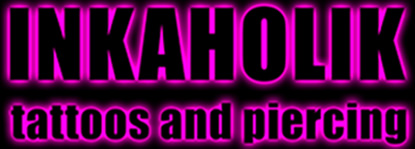Body and Facial Aftercare Tips:
A well-done piercing with perfectly placed jewelry can still cause problems if not cared for properly. We know that each body reacts differently to the various types of piercings. However, we also know that when the client follows a well-explained set of aftercare guidelines, the healing process is much better for the great majority of the cases.
Body piercings need to be cleaned once or twice daily, every day, for the entire initial healing time. Most people clean morning and/or night, in the shower. Do not clean more often as this can irritate your piercing, and possibly delay your healing. For once-a-day cleanings, do it at the end of your day. Optimal frequency will depend on your skin sensitivity, activity level, and environmental factors.
Before cleaning, wash your hands thoroughly with liquid antibacterial soap and hot water. If you wish, you may use disposable latex or vinyl gloves.
Prepare the area for the cleansing by rinsing or soaking with warm water and be sure to remove any stubborn crust using a cotton swab and warm water. Never pick with fingernails. This step is important for your comfort.
Apply a small amount of the Xpressions Piercing Aftercare cleaning solution (sold here) to the area, leave it on for 10 minutes then cleanse the area and the jewelry. There is no need to rotate the jewelry during the first few cleanings. If the cleaning solution indicates that a rinse is necessary after applying it, do so under running water otherwise let it air dry (Xpressions Piercing Aftercare sold here).
Please try to be patient. Each body is unique, and healing times can vary considerably. If the piercing is tender or secreting, you should continue the care regimen, even if it is past the stated average healing time range.
What is normal?
Bleeding, bruising, discoloration, and/or swelling are not uncommon. Any break of the skin, including a new piercing, can bleed or bruise. These are not indications of any complications. Reduce intake of aspirin, alcohol, and caffeine. For the above-the-neck piercing, try sleeping with the head elevated above the chest to limit overnight swelling. Studies show non-steroidal anti-inflammatory products such as Ibuprofen (Advil, Motrin, etc.) can help minimize swelling. Some tenderness or discomfort in the area of a new piercing is not unusual.
You may feel stinging, burning, aching or other unpleasant sensations off and on for several days or longer. During healing, there may be some itching. Secretion of a fluid, which contains blood plasma, lymph, and dead cells, is perfectly normal. It is fairly liquid-like, whitish-yellow in color and forms a crust on the jewelry at the openings of the piercing. This is not a plus but indicates a healing piercing. Once healed, your piercing may secrete a semi-solid white malodorous substance from the oil glands called sebum. Again, this is not pus but indicates a healed piercing. Piercings may have a tendency to have a series of “ups and downs” during healing by seeming healed and then regressing. Always try to be patient, and do keep cleaning during the entire initial healing time, even if the piercing seems healed sooner.
If you have any questions regarding your piercing, feel free to contact us anytime.


